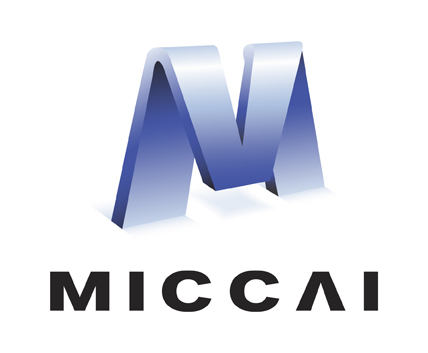Abstract
Diagnosis of mild cognitive impairment (MCI) and subjective cognitive decline (SCD) from fMRI functional connectivity (FC) has gained popularity, but most FC-based diagnostic models are black boxes lacking casual reasoning so they contribute little to the knowledge about FC-based neural biomarkers of cognitive decline. To enhance the explainability of diagnostic models, we propose a generative counterfactual attention-guided network (GCAN), which introduces counterfactual reasoning to recognize cognitive decline-related brain regions and then uses these regions as attention maps to boost the prediction performance of diagnostic models. Furthermore, to tackle the difficulty in the generation of highly-structured and brain-atlas-constrained FC, which is essential in counterfactual reasoning, an Atlas-Aware Bidirectional Transformer (AABT) method is developed. AABT employs a bidirectional strategy to encode and decode the tokens from each network of brain atlas, thereby enhancing the generation of high-quality target label FC. In the experiments of hospital-collected and ADNI datasets, the generated attention maps closely resemble FC abnormalities in the literature on SCD and MCI. The diagnostic performance is also superior to baseline models. The code is available at https://github.com/SXR3015/GCAN.
Access this chapter
Tax calculation will be finalised at checkout
Purchases are for personal use only
Similar content being viewed by others
References
Ramírez-Toraño, F., et al.: Functional connectivity hypersynchronization in relatives of Alzheimer’s disease patients: an early E/I balance dysfunction? Cereb. Cortex 31(2), 1201–1210 (2020)
Liebe, T., Dordevic, M., Kaufmann, J., Avetisyan, A., Skalej, M., Müller, N.G.: Investigation of the functional pathogenesis of mild cognitive impairment by localisation-based locus coeruleus resting-state fMRI. Hum. Brain Mapp. 43(18), 5630–5642 (2022)
Li, Y., Liu, J., Jiang, Y., Liu, Y., Lei, B.: Virtual adversarial training-based deep feature aggregation network from dynamic effective connectivity for MCI identification. IEEE Trans. Med. Imaging 41(1), 237–251 (2021)
Zuo, Q., Zhong, N., Pan, Y., Wu, H., Lei, B., Wang, S.: Brain structure-function fusing representation learning using adversarial decomposed-VAE for analyzing MCI. IEEE Trans. Neural Syst. Rehabil. Eng. 31, 4017–4028 (2023)
Selvaraju, R.R., Das, A., Vedantam, R., Cogswell, M., Parikh, D., Batra, D.: Grad-CAM: visual explanations from deep networks via gradient-based localization. Int. J. Comput. Vis. 128(2), 336–359 (2016)
Wang, H., et al.: Score-CAM: score-weighted visual explanations for convolutional neural networks. In: 2020 IEEE/CVF Conference on Computer Vision and Pattern Recognition Workshops (CVPRW), Seattle, The United States of America, pp. 111–119. IEEE (2019). https://doi.org/10.1109/CVPRW50498.2020.00020
Oh, K., Yoon, J., Suk, H.: Learn-explain-reinforce: counterfactual reasoning and its guidance to reinforce an Alzheimer’s disease diagnosis model. IEEE Trans. Pattern. Anal. 45(4), 4843–4857 (2021)
Ren, Z., et al.: Punctate white matter lesion segmentation in preterm infants powered by counterfactually generative learning. In: Greenspan, H., et al. (eds.) MICCAI 2023. LNCS, vol. 14224, pp. 220–229. Springer, Cham (2023). https://doi.org/10.1007/978-3-031-43904-9_22
Dosovitskiy, A., et al.: An image is worth \(16\times 16\) words: transformers for image recognition at scale. ArXiv, abs/2010.11929 (2020)
Bannadabhavi, A., Lee, S., Deng, W., Li, X.: Community-aware transformer for autism prediction in fMRI connectome. In: Greenspan, H., et al. (eds.) MICCAI 2023. LNCS, vol. 14227, pp. 287–297. Springer, Cham (2023). https://doi.org/10.1007/978-3-031-43993-3_28
Tan, Y., Ting, C., Noman, F.M., Phan, R.C., Ombao, H.C.: A unified framework for static and dynamic functional connectivity augmentation for multi-domain brain disorder classification. In: 2023 IEEE International Conference on Image Processing (ICIP), Kuala Lumpur, Malaysia, pp. 635–639. IEEE (2023). https://doi.org/10.1109/ICIP49359.2023.10222266
Tzourio-Mazoyer, N., et al.: Automated anatomical labeling of activations in SPM using a macroscopic anatomical parcellation of the MNI MRI single-subject brain. Neuroimage 15(1), 273–289 (2002)
Szegedy, C., Ioffe, S., Vanhoucke, V., Alemi, A.A.: Inception-v4, Inception-ResNet and the impact of residual connections on learning. In: 31st AAAI Conference on Artificial Intelligence, San Francisco, The United States of America, pp. 4278–4284. Association Advancement Artificial Intelligence (2016). https://doi.org/10.1609/aaai.v31i1.11231
Woo, S., Park, J., Lee, J.-Y., Kweon, I.S.: CBAM: convolutional block attention module. In: Ferrari, V., Hebert, M., Sminchisescu, C., Weiss, Y. (eds.) ECCV 2018. LNCS, vol. 11211, pp. 3–19. Springer, Cham (2018). https://doi.org/10.1007/978-3-030-01234-2_1
Jin, D., et al.: GrabAD: generalizability and reproducibility of altered brain activity and diagnostic classification in Alzheimer’s disease. Hum. Brain Mapp. 41(12), 3379–3391 (2020)
Eyre, H.A., et al.: Changes in neural connectivity and memory following a yoga intervention for older adults: a pilot study. J. Alzheimer’s Dis. 52(2), 673–684 (2016)
Xia, M., Wang, J., He, Y.: BrainNet Viewer: a network visualization tool for human brain connectomics. PLoS ONE 87, e68910 (2013)
Mah, L., Murari, G., Vandermorris, S., Chen, J., Verhoeff, N.P., Herrmann, N.: Distinct patterns of posterior default mode network-medial temporal lobe connectivity in mild cognitive impairment and subjective cognitive decline. Alzheimers Dement. 17(S4), e055832 (2021)
Ghanbari, M., Li, G., Hsu, L., Yap, P.: Accumulation of network redundancy marks the early stage of Alzheimer’s disease. Hum. Brain Mapp. 44(8), 2993–3006 (2023)
Acknowledgement
This work was founded by the National Natural Science Foundation of China (Grants 32361143787), the China Postdoctoral Science Foundation (Grants 2023M730873, GZB20230960). We have to appreciate the hospital-collected dataset provided by Hospital of Guangxi University of Traditional Chinese Medicine.
Author information
Authors and Affiliations
Corresponding authors
Editor information
Editors and Affiliations
Rights and permissions
Copyright information
© 2024 The Author(s), under exclusive license to Springer Nature Switzerland AG
About this paper
Cite this paper
Shen, X., Song, Z., Zhang, Z. (2024). GCAN: Generative Counterfactual Attention-Guided Network for Explainable Cognitive Decline Diagnostics Based on fMRI Functional Connectivity. In: Linguraru, M.G., et al. Medical Image Computing and Computer Assisted Intervention – MICCAI 2024. MICCAI 2024. Lecture Notes in Computer Science, vol 15010. Springer, Cham. https://doi.org/10.1007/978-3-031-72117-5_39
Download citation
DOI: https://doi.org/10.1007/978-3-031-72117-5_39
Published:
Publisher Name: Springer, Cham
Print ISBN: 978-3-031-72116-8
Online ISBN: 978-3-031-72117-5
eBook Packages: Computer ScienceComputer Science (R0)





